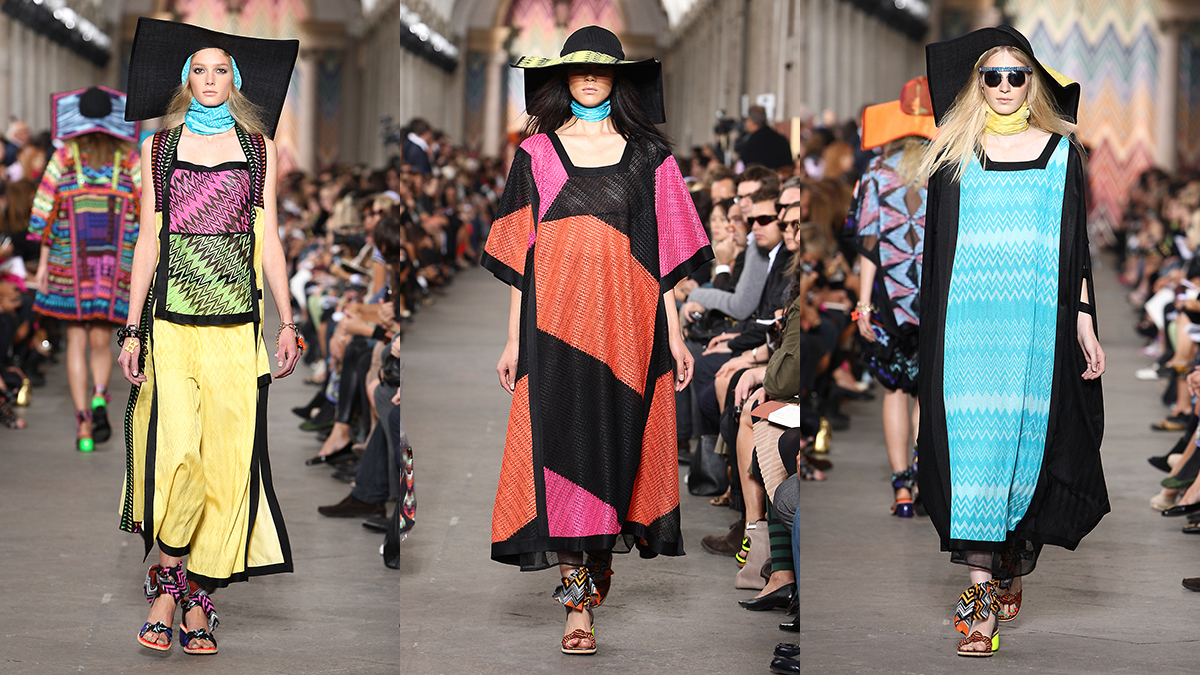Pattern recognition: Ottavio Missoni on his knitwear empire
The late founder of Missoni describes how colour and print radicalised stodgy knitwear and made for a singularly bright life

I fell into this career by chance. It’s not like I studied it. In fact, I didn’t study much of anything at all. My mother let me sleep in and I skipped school when I was young. In 1947, I bought a knitting machine with my friend Giorgio Oberweger. We had no idea how to make it work. But we studied it and started producing wool tracksuits in Giorgio’s mum’s house in Trieste. They were lightweight, stretchy and had zips. No one had created a sporty suit like this before.
When Rosita and I got married in 1953, the only thing I knew how to do was the tracksuits, so I thought, ‘Well, I’ll stick with the knits.’ We started a small atelier in Gallarate, near Milan, with a few machines and a couple of people working for us and we lived above the workshop. I designed the patterns and she designed the clothes.
I think you need at least 10 years to learn your craft. We learned on the job, day by day. It didn’t come easily or quickly. Doing something new means you have to go up against established rules; you need to challenge the status quo.
The Week
Escape your echo chamber. Get the facts behind the news, plus analysis from multiple perspectives.

Sign up for The Week's Free Newsletters
From our morning news briefing to a weekly Good News Newsletter, get the best of The Week delivered directly to your inbox.
From our morning news briefing to a weekly Good News Newsletter, get the best of The Week delivered directly to your inbox.
A lot of our success had to do with the fact that we brought products to the market that didn’t exist before. Knitwear was very basic, completely monochromatic. We started with stripes and then we did zigzags, vertical stripes, plaids and polka dots. In 1974, Rosita piled everything we were doing into one collection. The Americans called it ‘Put Together’. No one had done that before and now, when you look around today, you see it all the time. This idea of freedom and personal expression was very important.
Others told me I was an artist. I felt more like an artisan. The patterns I created were all spontaneous. That comes from your own personal experience: everything you’ve seen, read, lived through, it’s all in your head and you translate it into manual work. And I always felt very free to create.
There were really two main components to my work: the material and the colour. We pushed both of them. Think of how few musical notes there are and how many melodies have been created from just seven of them. It’s the same thing with colour. The possibilities are endless.
I don’t have anything against black. But colour brings a sense of lightness and happiness. I’ve always worn a lot of colour and pattern. I like the idea of dressing in a way that’s not codified. The people who have been attracted to the spirit of Missoni over the years tend to be artists and architects. One time many years ago I was dressed in my usual way and went to a friend’s house to drop off a package. The doorman thought I was a delivery boy and showed me the service entrance. The same day, in the same clothes, I went to a design shop and the owner thought I was an architect and gave me a discount.
A free daily email with the biggest news stories of the day – and the best features from TheWeek.com
When you put colours together, they need harmony. Nature does this better than anyone. At home, my garden is wild and natural. And the house is full of patterns, with children’s drawings next to important works of art. It’s all a great big mix but it’s in harmony. It’s like food. If you give the right dosage of oil and herbs it’s delicious. But too little or too much and it’s a disaster. You learn this by tasting, by trying.
But you can’t really talk about colour. You need to see it to understand it. In the end our work is recognisable. We’ve changed a lot over the last 50 years, but one glance and you can always tell it’s us.
Life without the company and our creations would’ve been fine. But, to be honest, it would’ve been less fun.
Ottavio Missoni survived an Egyptian prison during World War II, ran for Italy at the 1948 London Olympics and went on to co-create the global knitwear company.
-
 How to financially prepare for divorce
How to financially prepare for divorceThe Explainer Facing ‘irreconcilable differences’ does not have to be financially devastating
-
 Why it’s important to shop around for a mortgage and what to look for
Why it’s important to shop around for a mortgage and what to look forThe Explainer You can save big by comparing different mortgage offers
-
 4 ways to save on rising health care costs
4 ways to save on rising health care costsThe Explainer Health care expenses are part of an overall increase in the cost of living for Americans